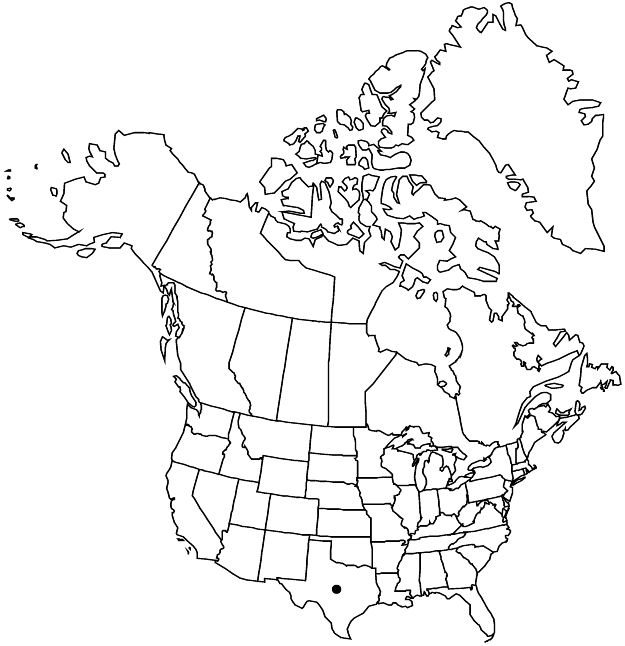Difference between revisions of "Cyclanthera dissecta"
J. Bot. (Hooker) 3: 280. 1841.
FNA>Volume Importer |
FNA>Volume Importer |
(No difference)
| |
Revision as of 20:14, 24 September 2019
Stems glabrous except for minutely villosulous nodes; tendrils 2-branched, rarely (shortest tendrils) unbranched. Leaves 3-foliolate, lateral pair of leaflets deeply divided, petiolules 3–5 mm, terminal leaflet 3–4.5 cm, blade broadly lanceolate, petiolule 7–15 mm, linear, abruptly broadening into leaflet base, leaflet margins coarsely serrate to shallowly or deeply lobed; petioles 10–21 mm. Staminate inflorescences 5–11 cm, floriferous portion 3–7 cm, (50–)65–90(–130)-flowered, paniculate-racemoid, lateral branches 3–25 mm, longest proximally; flowers solitary, in fascicles of 2–4, or along short axes. Staminate corollas 3.5–4.9 mm diam. Anther heads 0.6–0.8 mm diam., subsessile, glabrous. Fruiting peduncles 4–6 mm. Capsules narrowly ovoid, slightly oblique, short-beaked, 15–25 mm, spinules 3–4 mm.
Phenology: Flowering Sep–Nov.
Habitat: Riparian woods and thickets, bottomlands
Elevation: 20–70 m
Discussion
Cyclanthera dissecta is a rarely collected endemic of the southeastern Texas coastal plain (G. L. Nesom 2014), known only from five counties (Austin, Brazoria, Brazos, Grimes, Victoria). It differs from the plants of central Texas (previously identified as C. dissecta, here as C. naudiniana) in its smaller staminate flowers and anthers, short fruiting peduncles, and especially in its paniculate-racemoid staminate inflorescences with an abounding number of flowers.
Selected References
None.
